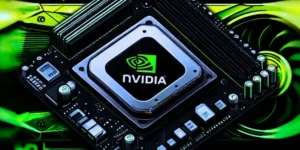The Atomic Pi is a small yet powerful single-board computer (SBC) with impressive computing capabilities and a wide range of applications. Digital Loggers developed it to provide a compact and cost-effective solution for various projects. With its remarkable specifications, versatile connectivity options, and expandability, it is an excellent choice for developers, makers, and enthusiasts. In this article, we will explore the key features, applications, and benefits of Atomic Pi, highlighting its performance, connectivity, and potential for customization.
What is the Atomic Pi?
The Atomic Pi is a single-board computer (SBC) developed by Digital Loggers. It offers a small form factor with an Intel Atom x5-Z8350 quad-core processor running at 1.92 GHz, providing substantial processing power for various tasks. It comes with 2 GB of DDR3 RAM, ensuring smooth multitasking and responsive performance. Connectivity options on the Atomic Pi are a key focus, with built-in Wi-Fi, Bluetooth, and multiple USB ports for versatile connectivity. The board also includes.
HDMI and audio output.
A microSD card slot for storage.
Expansion headers for further customization and integration of peripherals.
It supports various operating systems, including Linux distributions, allowing users to leverage the extensive software ecosystem for customization and development. Its compact size, low power consumption, and affordability make it popular for IoT projects, automation, and educational purposes.
Key Features and Functionalities of the Atomic Pi
It offers a range of key features and functionalities that make it a versatile single-board computer. Let’s explore some notable characteristics.
Intel Atom Processor
The Atomic Pi is powered by an Intel Atom x5-Z8350 quad-core processor, delivering substantial computing power in a compact form factor. The quad-core architecture ensures efficient multitasking, responsive performance, and energy efficiency, making it suitable for various applications.
Versatile Connectivity Options
It provides versatile connectivity options to meet diverse project needs. It features built-in Wi-Fi and Bluetooth, allowing for wireless communication and connectivity with other devices. Multiple USB ports connect peripherals such as keyboards, mice, and storage devices. HDMI and audio output provide convenient options for audiovisual applications.
Storage and Expandability
The Atomic Pi includes a microSD card slot, allowing users to efficiently add storage capacity for their projects. Additionally, expansion headers are available, providing the ability to integrate additional hardware components, sensors, or expansion boards. This expandability allows customization and tailoring of the Atomic Pi to specific project requirements.
Low Power Consumption
It is designed with low power consumption in mind, making it energy-efficient and suitable for projects where power efficiency is crucial. Its low power requirements make it an excellent choice for battery-powered devices, IoT applications, and embedded systems.
Community and Documentation
The Atomic Pi benefits from an active community of developers and enthusiasts. The community provides extensive documentation, tutorials, and support forums, making it easier for users to get started, troubleshoot issues, and share knowledge. The collaborative nature of the Atomic Pi community ensures ongoing development and support for a wide range of applications.
Applications of the Atomic Pi
It finds applications in various projects due to its compact size, powerful specifications, and versatile connectivity options. Let’s explore some notable applications.
IoT Projects
The Atomic Pi is well-suited for Internet of Things (IoT) projects due to its compact size, low power consumption, and built-in connectivity options. It can be used to build IoT devices like smart home controllers, environmental sensors, or data loggers. The Atomic Pi empowers users to create innovative IoT solutions.
Home Automation
With its connectivity options and expandability, the Atomic Pi can serve as the core of a home automation system. Users can integrate sensors, actuators, and other components to create a custom home automation hub. The Atomic Pi enables control and management of various smart devices, offering convenience and automation to homeowners.
Educational Projects
The Atomic Pi is an excellent choice for educational projects and learning environments. Its compact size, affordability, and versatility make it suitable for teaching programming, electronics, and IoT concepts. Students can explore coding, hardware integration, and prototyping using it as a learning tool.
Automation and Control Systems
It can be used to develop automation and control systems for various applications. Its processing power, connectivity options, and expandability make it suitable for projects such as robotics, industrial control systems, or home monitoring solutions. It provides a flexible platform for creating customized automation solutions.
Media and Entertainment
The Atomic Pi can serve as the foundation for media and entertainment projects. With its HDMI output, users can connect it to displays or TVs for media streaming, gaming, or multimedia playback. It compact size and processing capabilities enable various entertainment applications.
Benefits of the Atomic Pi
It offers several benefits, making it an attractive choice for various projects. Let’s explore some of its advantages.
Compact Size and Versatility
The Atomic Pi’s small form makes it highly portable and suitable for projects with space constraints. Its versatility enables many applications, from IoT projects to home automation and educational initiatives. Its compact size does not compromise its computing power, making it an excellent choice for on-the-go projects.
Powerful Computing Performance
Despite its small size, the Atomic Pi packs a powerful punch with its Intel Atom quad-core processor. The processing power ensures smooth multitasking, responsive performance, and efficient execution of applications. Users can rely on it to handle demanding tasks and deliver reliable performance.
Connectivity and Expandability
The Atomic Pi offers versatile connectivity options, including built-in Wi-Fi, Bluetooth, and multiple USB ports. This allows for seamless communication with other devices and integration of peripherals. The expansion headers allow customization and integration of additional hardware components, enabling users to tailor the Atomic Pi to their specific needs.
Low Power Consumption
It is designed with energy efficiency in mind, consuming low power while delivering impressive performance. This makes it suitable for battery-powered projects and applications where power efficiency is crucial. The low power consumption of the it contributes to longer battery life and reduces overall energy costs.
Active Community Support
It benefits from an active community of developers and enthusiasts. The community provides extensive documentation, tutorials, and support forums, making it easier for users to get started, learn, and troubleshoot. Community support ensures ongoing development and updates and fosters a collaborative user environment.
Conclusion
The Atomic Pi is a compact and powerful single-board computer with impressive computing capabilities in a miniature form factor. With its Intel Atom processor, versatile connectivity options, storage expansion, and active community support, it provides a platform for various applications. It can empower users to unleash their creativity and develop innovative solutions, whether for IoT projects, home automation systems, educational initiatives, or automation applications. By harnessing the power and flexibility of it, developers, makers, and enthusiasts can bring their ideas to life and unlock the potential for compact yet robust computing solutions.










